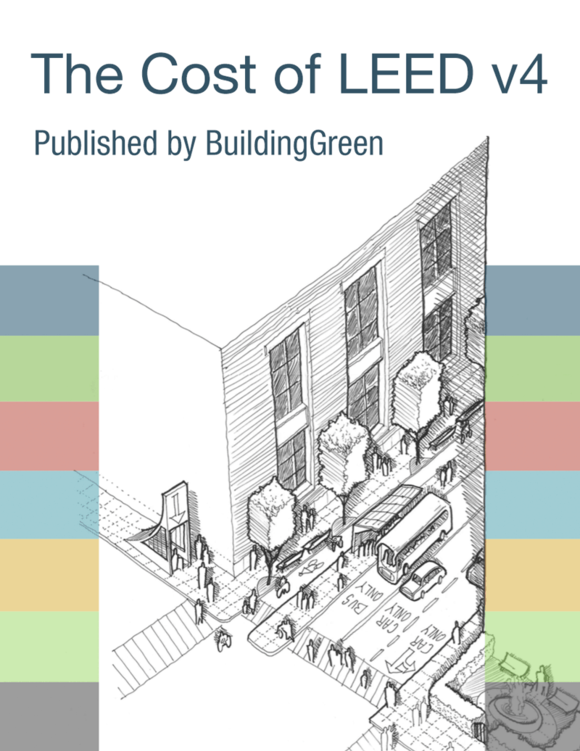Healthcare-v4 MRp3: PBT source reduction - mercury Required
LEEDuser overview
Frank advice from LEED experts
LEED is changing all the time, and every project is unique. Even seasoned professionals can miss a critical detail and lose a credit or even a prerequisite at the last minute. Our expert advice guides our LEEDuser Premium members and saves you valuable time.
For full access, sign up now for LEEDuser Premium
Already a premium member? Log in now
Credit language

© Copyright U.S. Green Building Council, Inc. All rights reserved.
Requirements
As part of the project’s recycling collection system, identify the following:
- types of mercury-containing products and devices to be collected;
- criteria governing how they are to be handled by a recycling program; and
- disposal methods for captured mercury.
- 4.2.1.1. New construction: healthcare facilities may not use mercury-containing equipment, including thermostats, switching devices, and other building system sources. Lamps are excluded.
- 4.2.1.2. Renovation: healthcare facilities must develop a plan to phase out mercury-containing products and upgrade current mercury-containing lamps to high-efficiency, low-mercury, or mercury-free lamp technology.
Table 1. maximum mercury content of lamps
Lamp |
Maximum content |
|---|---|
T-8 fluorescent, eight-foot |
10 mg mercury |
T-8 fluorescent, four-foot |
3.5 mg mercury |
T-8 fluorescent- two foot and three foot |
3.5 mg mercury |
T-8 fluorescent, U-bent |
6 mg mercury |
T-5 fluorescent, linear |
2.5 mg mercury |
T-5 fluorescent, circular |
9 mg mercury |
Compact fluorescent, nonintegral ballast |
3.5 mg mercury |
Compact fluorescent, integral ballast |
3.5 mg mercury, ENERGY STAR qualified |
High-pressure sodium, up to 400 watts |
10 mg mercury |
High-pressure sodium, above 400 watts |
32 mg mercury |
What does it cost?
Cost estimates for this credit
On each BD+C v4 credit, LEEDuser offers the wisdom of a team of architects, engineers, cost estimators, and LEED experts with hundreds of LEED projects between then. They analyzed the sustainable design strategies associated with each LEED credit, but also to assign actual costs to those strategies.
Our tab contains overall cost guidance, notes on what “soft costs” to expect, and a strategy-by-strategy breakdown of what to consider and what it might cost, in percentage premiums, actual costs, or both.
This information is also available in a full PDF download in The Cost of LEED v4 report.
Learn more about The Cost of LEED v4 »For full access, sign up now for LEEDuser Premium
Already a premium member? Log in now
Checklists
Step by step to LEED certification
LEEDuser’s checklists walk you through the key action steps you need to earn a credit, including how to avoid common pitfalls and save money.
For full access, sign up now for LEEDuser Premium
Already a premium member? Log in now
Documentation toolkit
The motherlode of cheat sheets
LEEDuser’s Documentation Toolkit is loaded with calculators to help assess credit compliance, tracking spreadsheets for materials, sample templates to help guide your narratives and LEED Online submissions, and examples of actual submissions from certified LEED projects for you to check your work against. To get your plaque, start with the right toolkit.
For full access, sign up now for LEEDuser Premium
Already a premium member? Log in now
LEEDuser overview
Frank advice from LEED experts
LEED is changing all the time, and every project is unique. Even seasoned professionals can miss a critical detail and lose a credit or even a prerequisite at the last minute. Our expert advice guides our LEEDuser Premium members and saves you valuable time.
For full access, sign up now for LEEDuser Premium
Already a premium member? Log in now
Credit language

© Copyright U.S. Green Building Council, Inc. All rights reserved.
Requirements
As part of the project’s recycling collection system, identify the following:
- types of mercury-containing products and devices to be collected;
- criteria governing how they are to be handled by a recycling program; and
- disposal methods for captured mercury.
- 4.2.1.1. New construction: healthcare facilities may not use mercury-containing equipment, including thermostats, switching devices, and other building system sources. Lamps are excluded.
- 4.2.1.2. Renovation: healthcare facilities must develop a plan to phase out mercury-containing products and upgrade current mercury-containing lamps to high-efficiency, low-mercury, or mercury-free lamp technology.
Table 1. maximum mercury content of lamps
Lamp |
Maximum content |
|---|---|
T-8 fluorescent, eight-foot |
10 mg mercury |
T-8 fluorescent, four-foot |
3.5 mg mercury |
T-8 fluorescent- two foot and three foot |
3.5 mg mercury |
T-8 fluorescent, U-bent |
6 mg mercury |
T-5 fluorescent, linear |
2.5 mg mercury |
T-5 fluorescent, circular |
9 mg mercury |
Compact fluorescent, nonintegral ballast |
3.5 mg mercury |
Compact fluorescent, integral ballast |
3.5 mg mercury, ENERGY STAR qualified |
High-pressure sodium, up to 400 watts |
10 mg mercury |
High-pressure sodium, above 400 watts |
32 mg mercury |

